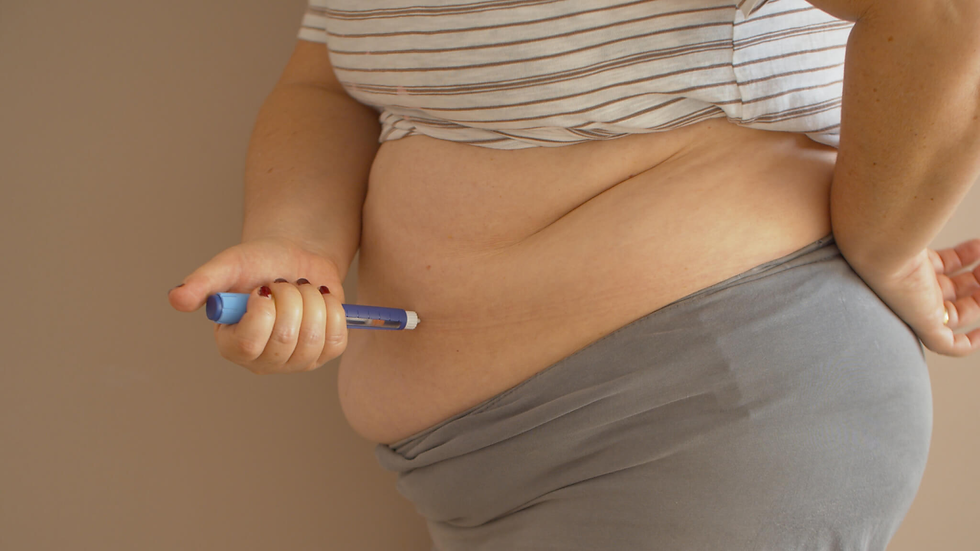Exploring Vulval Reconstruction Techniques
- kishwar adnan
- Apr 27, 2024
- 3 min read
Vulval reconstruction is a crucial aspect of plastic and reconstructive surgery that aims to restore the form and function of the Vulval Sergery In Dubai, addressing damage caused by various factors such as trauma, cancer treatment, and congenital conditions. This article delves into the different techniques used in vulval reconstruction, the advancements in the field, benefits, risks, patient considerations, recovery process, and real-life success stories.
1. Introduction to Vulval Reconstruction
Vulval reconstruction is a specialized field within plastic surgery focused on restoring the vulva's structure and function. This type of reconstruction is often necessary due to damage resulting from trauma, cancer treatment, or congenital abnormalities. The primary goal is to improve the patient's quality of life by addressing functional impairments and enhancing aesthetics.

2. Causes of Vulval Damage
Trauma
Traumatic injuries to the vulva can occur due to accidents, childbirth complications, or physical assault. Severe trauma may lead to tissue loss or disfigurement, necessitating surgical intervention for reconstruction.
Cancer Treatment
Surgical removal of vulval cancers or radiation therapy can result in significant tissue loss or scarring, affecting both appearance and function. Vulval reconstruction is often performed as part of the treatment plan to restore the affected area.
Congenital Conditions
Some individuals are born with congenital anomalies affecting the vulva, such as vaginal agenesis or labial hypertrophy. Surgical reconstruction may be required to correct these abnormalities and improve overall genital anatomy.
3. Vulval Reconstruction Techniques
Skin Grafting
Skin grafting involves harvesting healthy skin from one part of the body and transplanting it to the vulvar region to cover defects or scars. This technique is commonly used for larger tissue defects and offers reliable outcomes.
Local Flaps
Local flaps involve transferring adjacent tissue with its blood supply to reconstruct defects in the vulva. This technique preserves the native blood circulation and results in better tissue integration.
Labiaplasty
Labiaplasty is a surgical procedure that involves reshaping or resizing the labia minora or majora to improve aesthetics or alleviate discomfort. While primarily a cosmetic procedure, labiaplasty can also be performed as part of vulval reconstruction to enhance symmetry and function.
Tissue Expansion
Tissue expansion involves placing an inflatable device under the skin near the defect and gradually filling it with saline solution to stretch the surrounding tissue. Once sufficient expansion is achieved, the expanded tissue is used to reconstruct the vulva.
4. Advancements in Vulval Reconstruction
Tissue Engineering
Tissue engineering techniques involve growing artificial tissues in the laboratory using cells, scaffolds, and growth factors. These engineered tissues can be used in vulval reconstruction to replace damaged or missing tissue, offering a more natural and durable solution.
Regenerative Medicine
Regenerative medicine focuses on stimulating the body's natural healing processes to repair damaged tissues. Innovative therapies such as platelet-rich plasma (PRP) injections and stem cell treatments show promise in enhancing wound healing and tissue regeneration in vulval reconstruction.
5. Benefits and Risks
Improved Aesthetics and Functionality
Vulval reconstruction can improve the appearance of the genital area and restore normal urinary and sexual function, enhancing the patient's confidence and quality of life.
Risks and Complications
Like any surgical procedure, vulval reconstruction carries risks such as infection, bleeding, and scarring. Patients should discuss potential complications with their surgeon and weigh the benefits against the risks before undergoing surgery.
6. Patient Considerations
Candidacy for Surgery
Candidates for vulval reconstruction should be in good overall health and have realistic expectations about the outcomes of the procedure. A thorough evaluation by a qualified plastic surgeon is necessary to determine eligibility for surgery.
Preoperative Preparation
Before undergoing vulval reconstruction, patients may need to undergo medical tests, stop certain medications, and follow specific preoperative instructions to ensure a safe and successful surgery.
Postoperative Care
Following surgery, patients will require diligent wound care, pain management, and follow-up appointments to monitor healing and address any concerns promptly.
7. Recovery Process
Timeline and Expectations
The recovery timeline for vulval reconstruction varies depending on the chosen technique and individual patient factors. Most patients can expect some discomfort and swelling initially, with gradual improvement over several weeks to months.
Rehabilitation and Follow-up
Physical therapy or pelvic floor exercises may be recommended during the recovery period to promote healing and restore pelvic function. Regular follow-up appointments with the surgeon are essential to monitor progress and address any complications.
8. Success Stories and Testimonials
Real-life success stories and testimonials from patients who have undergone vulval reconstruction can provide valuable insights into the potential benefits and outcomes of the procedure. Hearing firsthand experiences can reassure prospective patients and help them make informed decisions about their care.
9. Conclusion
Vulval reconstruction techniques have evolved significantly, offering patients effective solutions to address a wide range of vulval deformities and functional impairments. By combining surgical expertise with innovative technologies, plastic surgeons can restore both form and function, improving the quality of life for individuals affected by vulval damage.







Comments